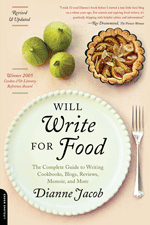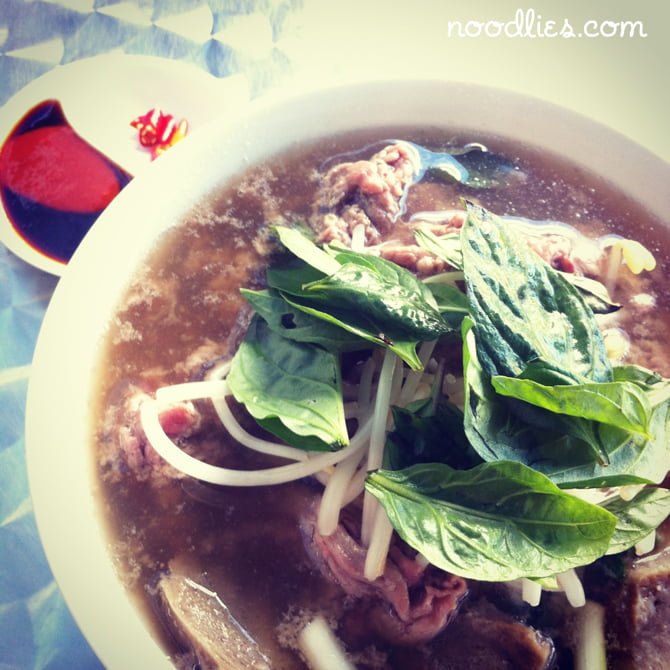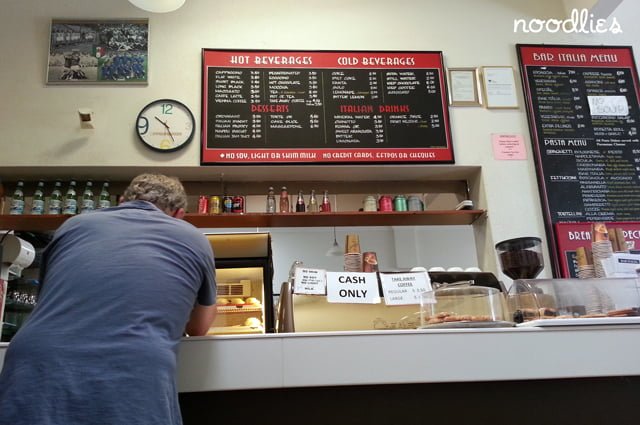How to become a better food writer
“Our Vietnamese friends were craving for banh cuon – rice noodle pockets filled with mince served with cured pork, fried onions and range of mints including coriander and basil. A good banh cuon is distinguished by how thin the rice noodle is, and by the dipping sauce. It’s different from banh uot; which doesn’t have any filling” noodlies, Sydney food blog’s review of Phu Quoc, Cabramatta (May 2010).
The quote above is from a noodlies review of banh cuon, a popular Vietnamese dish at Phu Quoc, a very decent Cabramatta restaurant. After attending Dianne Jacob‘s Food Writing Workshop at Eat Drink Blog 2012 earlier this month, I’m not sure if this was a review. Sure it was descriptive, but does the reader get any sense of this dish’s taste, texture and smell? Is there a sense of the restaurant’s environment, sounds and decor? Why was it important for the reader to know we were there because my Vietnamese friends were craving banh cuon?
Is that an example of good food writing? Dear readers, please don’t answer, I think I know.
Below is my summary of Dianne’s workshop. I hope it helps and encourages you along your food writing path.
What is food writing?
 Apart from recipes which is relatively more rigid, Dianne thinks that food writing can be related to just about any topic; restaurants reviews, ethics, politics, cars (food trucks). Unless you are a restaurant reviewer, it’s not that important to describe food. The role of a food writer, any writer in fact is to transport, create an emotional connection with, and engage the reader.
Apart from recipes which is relatively more rigid, Dianne thinks that food writing can be related to just about any topic; restaurants reviews, ethics, politics, cars (food trucks). Unless you are a restaurant reviewer, it’s not that important to describe food. The role of a food writer, any writer in fact is to transport, create an emotional connection with, and engage the reader.
You can hear the distinctive ‘voice’ of a good writer, something that’s uniquely and authentically theirs, AA Gills is a good example, read a paragraph of his work and it’s as distinctive as hearing someone’s voice, you immediately recognise it.
Few restaurants are superb or pathetic, so for most reviewers food writing is about those establishments that are in between the two extremes. Here are some tips which help to build your ‘voice’ as well as make your writing better…
Manage your internal critic
That second voice in your head that whispers (or sometimes screams):
- your writing is pathetic
- the facts are wrong, stop now and check it
- the subject is boring
If you listen to the constant chatter, you won’t end up writing one word. Actually, that internal critic is valuable, though not during the writing process. Keep it in check to use in the editing process (see below).
Who are you writing for?
If you’re writing just for yourself then go ahead, however, the act of writing a blog post suggests you are also writing for another audience. You should try to get a picture of who your readers are, use Google Analytics, Facebook fanpage profile or run surveys on your blog to help understand your audience. If all else fails, build an ideal picture of your reader, it will instantly help you to choose the appropriate topics, tone, style and even blog layout.
Be specific
“He walked in to the room” is vague compared to “The waiter rushed into the kitchen“.
“The food was delicious” says very little about the dish. Consider using some more meaningful adjectives, Dianne gave us some examples which relate to the senses:
- Taste and smell: buttery, musty, tart, zesty, herbal
- Texture: brittle, chewy, foamy, sticky
- Appearance: limp, plump, trembling, wimpy, brilliant
- Sounds: spluttering, crackling, bubbling
Pace
Put movement in your writing combining short sentences with action words like cracks, bounce and shatters bounds can help pick up pace, while longer sentences can build tension and anticipation. Together they help to move your readers along or slow them down.
Simile and Metaphors
These can help a reader to relate to your writing by drawing on their own personal experiences; “inviting a vegetarian to our meat loving household is like forcing the Pope to come to Mardi Gras wearing a pink wig” (simile) or “the tinsel on the Christmas roast was parsley” (metaphor).
Humour
A fun piece can be very engaging, irony can have good cut through and being self-deprecating can create a constant connection with the reader as long as it’s not false humility.
Editing
Rest your writing overnight because the first draft can be awful, then revisit to edit:
- throat-clearing: avoid it. When you don’t know where to start, you may be tempted to add a ‘warm up’ sentence that’s superfluous to the story, such as: “I haven’t posted for weeks…“, or in my example above “Our Vietnamese friends were craving for banh cuon” – it’s out of context and unnecessary, so drop it
- tighten: check for flabby copy, is every word needed? Can it be shorter, tighter? Are there vague copy as per “the person walked into the room” in the be specific example above?
 Conclusion
Conclusion
As you can see, I got a lot from Dianne’s workshop.
If you found these notes interesting, I highly recommend her book Will Write for Food: The Complete Guide to Writing Cookbooks, Blogs, Reviews, Memoir, and More which goes into much more detail.
And something from me: an additional suggestion…
I can’t remember if we discussed it at the workshop, but my additional tip is to read more, it helps build vocab, expose you to other writing styles, it doesn’t have to be about food, try it, you’ll like it. Only recently, I’ve decided to read on the train ride to work rather than listen to music or playing on twitter and I’m enjoying it lots.
In a follow up to this post, I list some of my favourite books and extracts which demonstrates the tips above.
Did you find these tips useful? Do you have tips to share? Please leave a comment and spread the knowledge and love!
Feature image courtesy of Stuart Miles, FreeDigitalPhotos.net






great to read these tips 🙂
Oh wow! Was hoping someone who was at the workshop would share some tidbits. Thanks for sharing! 🙂
Thanks for the tips, Thang – sounds like it was a good session.
Hi Thang,
You took good notes! Thanks very much. I enjoyed the workshop and thought the Australia food bloggers I met and heard speak were thoughtful and intelligent.
Excellent tips! I was torn between the workshop and the group activity. I’ve read Dianne’s book and found it very helpful. As are you I’m always reading, you never can learn enough!
Great wrap up!
Great post Thang – I didn’t go the workshop but I really think I should’ve have. I am a BIG user of delicious in my posts as stuff is…well, it’s delicious! LOL.
Fantastic summary Thang, thanks for sharing what us winery goers missed out on.